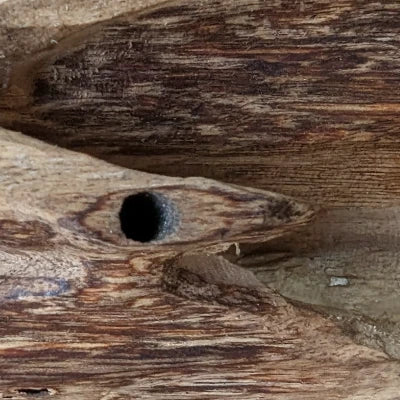Menu
-
-
F.A.Q
- How to identify genuine agarwood chip, natural or cultivated
- How to identify oil injection / absorption fake agarwood beads
- How to know if there are more than one oil in your oil
- How to make your wood bracelet or mala darker
- How to tell if an Agarwood bead sinks WITHOUT sinking it under water?
- How does back flow incense work and how do you burn it?
- Where to start if you don't know what agarwood is ?
- Why are you losing money if you buy seeds and plants?
- Which agarwood incense should I choose?
- Frequently Asked Questions
- Agarwood Related Articles
- Shipping
-
SHOP - Agarwood
-
SHOP - Other Fragrant Wood
-
SHOP - Incense Holder and Burner
-
- FREE guide book
- Testimonials
- "Why did you buy this?"
- Contact us
- About Us
- +61430284329
- Login
-
English


Benefit of Agarwood oil (Oud) and its applications
February 14, 2023 8 min read
Table of Contents:[hide]
From our live chat data, three of the frequently asked questions are
- What are the benefits of Agarwood oil?
- How do I use Agarwood oils?
- How much agarwood oil is usually put into a perfume?
So today, I will answer those questions with some recent Agarwood related journals.
Agarwood essential oil, also known as oud oil, is extracted from the agarwood tree and carries an exceptional fragrance. In addition to its pleasant smell, it offers a number of beneficial health properties! Here are some of them::
Relaxation and stress relief:
The warm, woody scent of agarwood essential oil is known to be calming and relaxing, making it an effective remedy for stress, anxiety, and insomnia.
Alamil (et al 2022) in Rediscovering the Therapeutic Potential of Agarwood in the Management of Chronic Inflammatory Diseases has summarised some important points.
The researchers observed that agarwood has anti-inflammatory properties in rats with inflammation in the liver or brain induced by methanol injection. This was shown to bring proinflammatory mediators and neurotransmitters back to near-normal levels through the inhibition of multiple inflammatory pathways. Other studies have also found that agarwood has strong antidepressant and anxiolytic effects on stressed rats, believed to be due to the inhibition and downregulation of cytokines (IL-1α, IL-1β, and IL-6) that activate the HPA axis and lead to depression and anxiety
The second study used rats and found that agarwood has strong anti-depressant and anti-stress effects. This was evidenced by reduced levels of various markers, including lipid peroxidation, NO, TNF-α, IL-1β, cortisol, COX-2, LOX, AST, ALT, and lipids. The study suggests that these effects are primarily due to the suppression of cortisol, which leads to the suppression of these cytokines.
Recent studies have shown that the neuroimmune-endocrine axis plays a significant role in depression and anxiety. Stressful triggers in the brain lead to the release of inflammatory cytokines such as IL-1β, IL-6, and TNF-α, which affect neurotransmitter and hormonal balance in the HPA axis and cause emotional imbalance and symptoms of depression and anxiety. Prolonged stress also leads to neuronal damage and further activation of inflammatory pathways and mediators, such as NO, PGE, and COX. Therefore, agarwood oil is a potential candidate for a new treatment for both diseases that avoids the side effects of conventional treatments.
Agarwood oil can help you to relax and relieve your stress. However, it cannot get rid of your worries completely. I use Oud oil daily but some days no matter how much oil I use, I still feel stressed.
So I seek help. A local monk told me to ask myself
" Can I do something about it?"
"Yes, I can." <- ok, since I can do something about it, why should I worry?
"No, I cannot." <- there is nothing I can do, so there is no point to worry.
This was an eye-opening and profound lesson I learnt and I would like to share it with you
Understanding this will truly reduce your worries and stress even if you do not use Agarwood oil :)
Pain relief:
Agarwood essential oil has anti-inflammatory properties that can help to relieve pain and discomfort, particularly in the joints and muscles.
The below table will summarise the anti-inflammatory properties of Oud oil
| Study Model(s) | Concentration | Study Duration | Anti-Inflammatory Outcomes | Reference | |
|---|---|---|---|---|---|
| Inflammatory Pathways |
Key Findings | ||||
| In vivo and in vitro study on carrageenan-induced rat paw edema and HRBC stabilization method | In vivo: 50 and 100 mg/kg | In vivo: 4 h | Inhibition of the cyclooxygenase (COX) inflammatory pathway | Strong inhibition of rat paw edema. Inhibition of the release of prostaglandins. HRBC membrane stabilization. |
[117] |
| In vitro: 100, 250, and 500 mcg/mL | Inhibition of cell membrane lysis induced by hypotonicity. | ||||
| In vivo study on carrageenan-induced rat paw edema and xylene-induced ear edema in mice | Mice: 60 to 960 mg/kg | Not specified | Inhibit the expression p-STAT3 gene. | Reduce the production of IL-1β and IL-6. | [118] |
| Rats: 680 mg/kg | |||||
| In vitro study on RAW 264.7 cells | Not specified | Not specified | Not specified. | Inhibit the release of TNF-α and IL-1α. | [18] |
| In vivo study on mice induced with ear inflammation and in silico studies: ADME and QSAR | In vivo: 20 uL/ear for 3 times | 24 h | Not specified. | Reduce inflammation in mice ears. | [119] |
| Inhibit the release of IL-1β, IL-6, and TNF-α. | |||||
| ADME and QSAR results corresponding to anti-inflammatory activity. | |||||
| In vivo study on rats with paw edema induced with carrageenan and with granuloma induced with cotton pellets | 50, 100 and 200 mg/kg | Carrageenan-induced paw edema: 3 h Cotton pellets-induced granuloma: 7 days |
Not specified. | Inhibit the activity of prostaglandins (PGE2 and PGI2). | [120] |
| Reduced edema in rat paws. | |||||
| Smaller size granuloma compared to control group. | |||||
| In vitro study on hPBMCs | 0.5, 1.0, 1.5, 2.0, 2.5, and 3.0 mg/mL | 24 h | Inhibit the p38 MAPK activation. | Inhibit the production of TNF-α. | [121] |
| In vivo study on mice with intestinal injury induced by 5-flurouracil | 200, 400, and 800 mg/kg | 7 days | Inhibiting the oxidative stress. | Less symptoms of intestinal inflammation. | [122] |
| Inhibiting the expression of inflammatory mediators. | Less tissue inflammation observed on histopathology and improved recovery. | ||||
| Inhibiting the NF-κB pathway. | Decreased levels of COX-2 and TNF-α inflammatory mediators in the intestinal cells. | ||||
| In vivo study on mice with intestinal injury induced by 5-flurouracil | 0.71, 1.42 and 2.84 g/kg | 14 days | Inhibiting oxidative stress. Inhibiting the mRNA expression of inflammatory pathways and mediators. |
Improved body weight and intestinal propulsion. | [123] |
| Less mucosal injury. | |||||
| Decreased levels of NO and increased glutathione and superoxide dismutase activity. | |||||
| Decreased the levels of IL-17, IL-33, and increased IL-10. | |||||
| Inhibiting the NF-κB pathway | |||||
| In vivo study on mice with gastric ulcers induced by ethanol | 0.71, 1.42 and 2.84 g/kg | 7 days | Inhibiting oxidative stress. Inhibiting the mRNA expression of inflammatory pathways and mediators. |
Protective effect against gastric ulcer and lesser degree of inflammation. | [124] |
| Decreased levels of IL-1β, IL-6, and increased level of IL-10. | |||||
| Inhibition of the NF-κB and p38 MAPK pathways. | |||||
| In vitro bovine serum protein (BSA) denaturation method and in vivo Freund’s-adjuvant-induced arthritic rat model | In vivo: 125 and 250 mg/kg | In vivo: 21 days | Inhibition of protein denaturation. | Reduced paw edema by gross observation and radiography. | [125] |
| In vitro: 100, 250 and 500 mcg/mL | Inhibition of inflammatory mediators. | Improved hematological parameters. | |||
| In vivo study on methanol induced inflammation in livers and brains of rats | 100 mg/kg | 35 days | Inhibit oxidative stress and apoptosis. | Inhibit the release of NO, MDA, ACHE, COX-2, LOX, TNF-α, Caspase-3, MAO, and DNAF neurotransmitters and pro-inflammatory mediators. | [126] |
| In vivo study on stress-induced anxiety and depression in rats | 10, 20 and 40 mg/kg | 10 days | Decreases the levels of IL-1α, IL-1β, and IL-6 in serum. Downregulated the iNOS in the cerebral cortex and hippocampus. |
Antidepressant effect. | [127] |
| Anxiolytic effect. | |||||
| Decreased levels of ACTH and CORT serum. | |||||
| In vivo study on rats with stress-induced with epinephrine | 100 mg/kg | 21 days | Inhibition of cortisol production. | Reduced levels of lipid peroxidation, NO, TNF-α, IL-1β, cortisol, COX-2, LOX, AST, ALT, and lipids. | [128] |
|
Publisher’s Note: MDPI stays neutral with regard to jurisdictional claims in published maps and institutional affiliations.
|
© 2022 by the authors. Licensee MDPI, Basel, Switzerland. This article is an open access article distributed under the terms and conditions of the Creative Commons Attribution (CC BY) license (https://creativecommons.org/licenses/by/4.0/).
Table 5. Summary of studies proving the anti-inflammatory properties of agarwood oil.
Improved respiratory health:
Agarwood essential oil is often used to treat respiratory conditions such as coughs, colds, and asthma due to its decongestant properties.
According to modern pharmacology, sesquiterpene components of agarwood oil have good biological activity in the central nervous system, respiratory system, digestive system, and other systems
(https://pubmed.ncbi.nlm.nih.gov/36046866/)
Agarwood oil has the potential to target certain pathways in the lungs that are related to inflammatory diseases like asthma and COPD. These pathways play a role in the pathophysiology of these conditions and may be targeted for therapeutic purposes.
NF-κB is a pathway that is activated by various inflammatory mediators, pollutants, and other factors. It has been implicated in the development of asthma and COPD. By targeting NF-κB, agarwood oil may have the potential to reduce inflammation in the lungs and improve symptoms of these conditions.
Similarly, the p38 MAPK pathway is another target for the treatment of inflammatory diseases like COPD. By blocking this pathway, agarwood oil may have the potential to reduce inflammation and improve symptoms in individuals with COPD.
In addition to targeting these pathways, agarwood oil has also been shown to block histamine release from mast cells in rats. Histamine is a substance that is released during an allergic reaction and can cause symptoms like itching, redness, and swelling. By blocking histamine release, agarwood oil may have the potential to reduce symptoms in individuals with allergy-related diseases like asthma.
Overall, while more research is needed to fully understand the effects of agarwood oil on respiratory cells and tissues, these initial findings suggest that it may have potential as a therapeutic agent for the treatment of inflammatory lung conditions like asthma and COPD.. However, more research is needed to study the direct effect of agarwood oil on respiratory cells or tissue.
Antibacterial and antifungal properties:
Without these two properties, Aquilaria trees will never turn into Agarwood.
Reason: when insects (and/or other external factors) attack the tree. Bacteria and fungi grow around the wound of the Aquilaria trees.
The trees then create "Agarwood" to fight against these invaders.
When Agarwood is distilled into Agarwood oil, the potent antibacterial and antifungal properties remain.
See the below evidence

Source: Antioxidant and Antifungal Activity of Endophytic Fungi Associated with Agarwood Trees
It means that if cosmetic manufacturers use Agarwood oil to create their skincare or perfume, the antifungal and antibacterial properties would be helpful. Their product shelf lives could be extended longer.
It is useful to include Agarwood oil in skin care products to help treat various skin conditions such as acne, fungal infections, and skin irritation.
Aromatherapy: Agarwood oil can be used in aromatherapy to help purify the air, boost the immune system, and promote overall health and well-being.
Recently, some scientists find "Therapeutic Potential of Agarwood in Oral Chronic Inflammatory Diseases Management"
The above article is discussing the potential benefits of agarwood in treating gingivitis, a type of gum disease caused by chronic inflammation of the gums due to long-term stimulation by bacteria. It explains that gingivitis is an immune disease that occurs as a result of an imbalanced immune response to bacteria in the gums.
Agarwood and its essential oil have been found to have various pharmacological activities, including immune regulation. The essential oil has been found to have anti-inflammatory properties, which could be useful in treating gingivitis. It mentions that two substances in agarwood essential oil, tryptone and sesquiterpene, are the main anti-inflammatory and immunoreactive substances.
Two other compounds, CYF-2 and HHX-5, have been isolated from agarwood and found to inhibit the activation of certain cells involved in the immune response, such as microglia, dendritic cells, neutrophils, macrophages, T cells, and B cells. They do so by inhibiting the activation of signalling pathways in the cells, such as STAT and NF-κB.
In conclusion, the author suggests that agarwood has the potential to alleviate the overactive immune response that causes gingivitis, due to its ability to regulate the immune system and reduce inflammation.
Agarwood has some active health-beneficial compounds such as sesquiterpenoids, flavonoids, and quercetin. These active compounds have anti-inflammatory, antioxidant, bacteriostatic, analgesic, sedative, and immune properties. Gingivitis is a chronic inflammation caused by plaque accumulation on the gingival margin, and there is a need to find drugs with fewer side effects to alleviate inflammation. Agarwood has fewer side effects than commonly used chemical synthetic drugs and can potentially alleviate periodontal tissue inflammation. This paper discusses the possible mechanism of agarwood's effects and provides a theoretical basis for the transformation of the agarwood industry.
In case you are interested, try our agarwood oil samples set here
Leave a comment
Comments will be approved before showing up.
Also in News

Anoint with The Zen Path, and you will never yearn for the artificiality that numbs the senses
March 03, 2024 2 min read

You say: “Your Agarwood is too expensive”. Let’s Reason Together - about Price
February 14, 2024 8 min read
